Wondering what red dot sights for pistols are for? They’re quite the bit of kit, as they allow for fast and accurate sight acquisition. Some people insist that they’re the only way to shoot, though iron sights have worked plenty well for a very long time, thank you very much.
So, what are they?
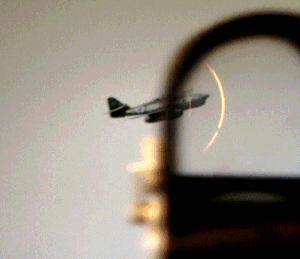
The modern red dot sight is just a new-fangled type of reflex sight, a sighting system developed for anti-aircraft guns in the early 20th century. Reflex sights – this is the most basic version possible here – superimpose an illuminated image (the reticle) over the sight picture, which moves as the gun does.
The reticle, once properly aligned, is parallel to the barrel out to infinity. Therefore, the dot gives you basically the point of impact up to the point where the bullet starts to drop beyond the area of the reticle projected onto the target.

The reticle on red dot sights, or the dot that you see, is sized in minutes-of-angle.
A minute of angle is an angular measurement, namely 1/60th of a 360-degree circle. This is the Reader’s Digest version here, so please feel free to expand in the comments if you like.

Provided your optic is zeroed for your firearm, it will be within a defined area around where the reticle rests on the target.
Minutes of angle, again, are an angular measurement rather than a measurement of distance. Now, think of your gun forming the point of an isosceles triangle. The base of the triangle is the area where the bullet will land, and the minute of angle is the angle of the sides and the base. As the side gets longer, the base increases in size proportionally but the angle (the MOA) remains the same.
One minute of angle (1/60th of 360 degrees) works out to about 1.05 inch at 100 yards (which most people round down to 1 inch at 100 yards) then 2 inches at 200 yards and so on.
Why am I bothering to talk about all of this? Because it matters, of course! The larger the size of your red dot, the larger the area the bullet you shoot will potentially land in.
A small dot (the smallest available is generally 1 MOA with most red dot sights for pistols) will give you more precision, but makes sight acquisition slightly slower. A larger dot gives you faster sight acquisition, but it’s relatively less precise, especially at longer ranges.
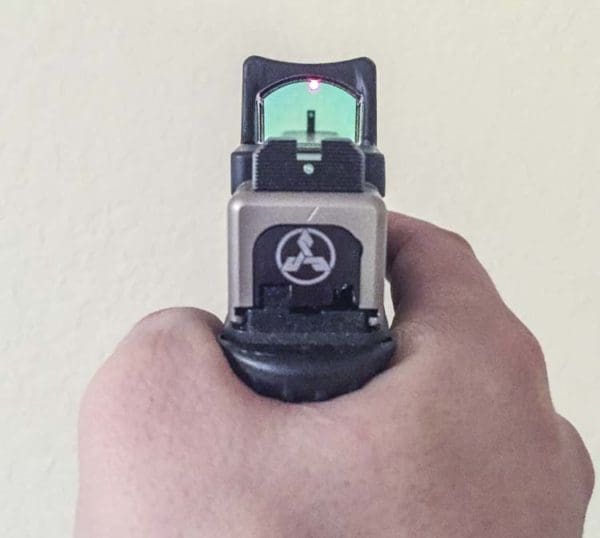
As a result, 3 MOA to 4 MOA red dot reticle optics are the most common for handguns as they tend to give you the best of both worlds. Sight acquisition is fast, but precision doesn’t suffer too much.
Red dots get much larger; Trijicon’s popular RMR red dots can be had with dots up to 13.25 MOA, which gets you on target seriously quick at short ranges, but are basically only good for the broad side of a barn at longer ranges.
Granted, Trijicon RMR sights can be had with an MOA anywhere from 1 MOA to 13.25 MOA, depending on the model you choose and your specific needs. Other makes/models, such as Burris FastFire red dot optics may have fewer options; the Burris FastFire 3 red dots are available only with 3 MOA or 8 MOA reticles. Vortex Viper optics come with 6 MOA dots only, and Vortex Venom red dots are available with 3 MOA or 6 MOA dots. Leupold’s DeltaPoint Pro can be had with a 2.5 or 7.5 MOA dot.
Many more models are available, of course; those are just some of the more popular makes and models.
As you can imagine, the point that we’re getting at here is that you need to pick a red dot sight that suits the purpose you have in mind for it. Are you looking for a fast sighting method for a CQB pistol? Are you looking for the utmost in precision shooting? Or do you want a combination of both of the above? Once you have that figured out, then pick a sight with an appropriate reticle size.
Now that we understand some of the basics, let’s get onto other features. All red dot optics are adjustable for windage and elevation for zeroing purposes. That needs to be done with any optic, be it a red dot, fixed or variable-powered scope and indeed even iron sights. That much speaks for itself.
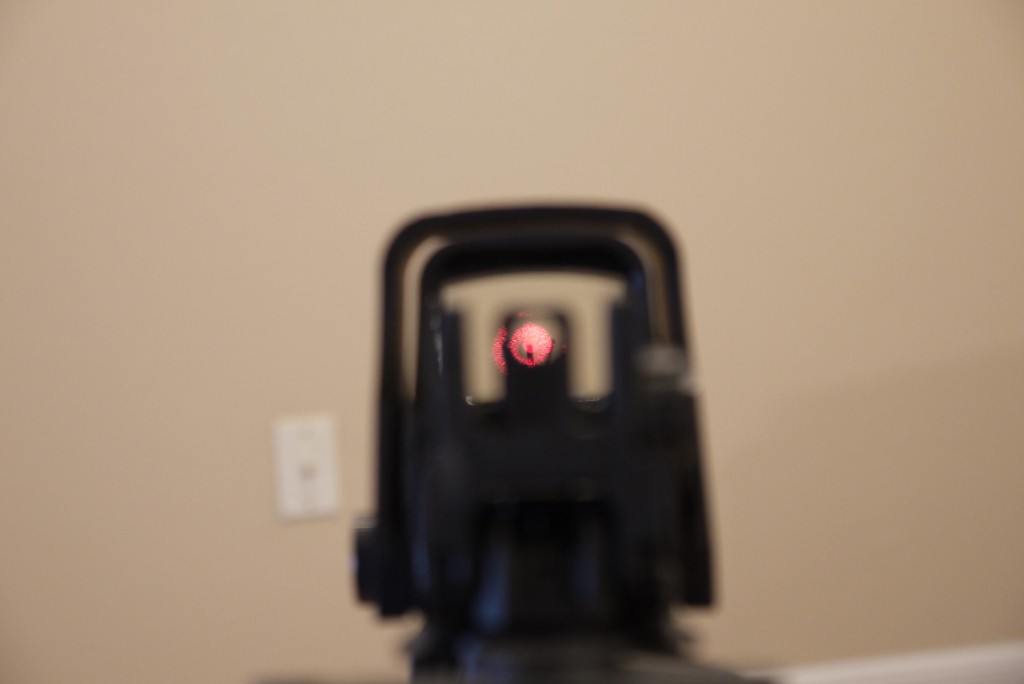
Something else to be aware of is co-witnessing. This is the use of iron sights in conjunction with a red dot optic.
Some optics are low-mounted so standard-height sights can be used, but many require you to install suppressor height sights in order to co-witness them. Proper use is to put the red dot over the front sight post, like a halo.
Some red dot optics are designed for use with many standard sights, but some are designed so that a specific rear sight must be installed for co-witnessing, such as the Leupold DeltaPoint Pro red dot, which requires you install a rear sight sold by Leupold.
Granted, Leupold is one of the leading makers of optics from red dots to rifle scopes, so you won’t go wrong buying their products…though they’re a tad expensive.
Do you plan on installing suppressor height sights? Or do you prefer your sights as they come? Make sure to choose the correct optic once you’ve figured this out for yourself. Most often, a suppressor-height front sight is needed at minimum, if not a suppressor height set installed as a matter of course.
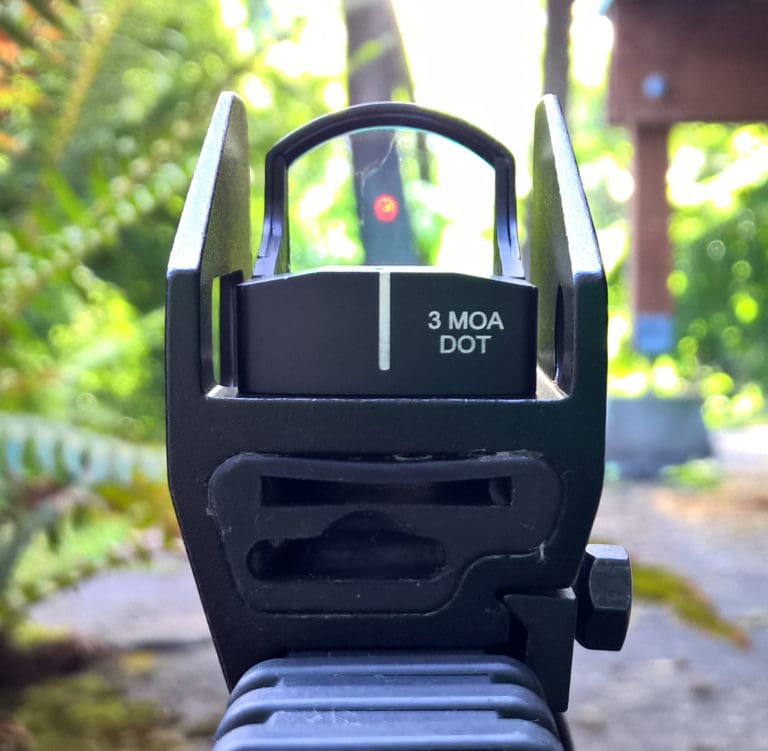
Illumination is another feature to be aware of. Some are battery-powered, some use passive illumination from fiber optics and/or tritium in order to illuminate the optic. The former is often brighter, but requires batteries. The latter requires no batteries, and works in low-light environments, but may not be quite as bright.
Typically, battery-powered illuminated red dots use an LED. Brightness is usually adjustable. Battery life depends on the make/model as well as usage, such as the brightness settings. For instance, the Aimpoint Acro C-1 is designed so that, when used with the appropriate batteries, the optic has a battery life of up to 1.5 years when set to 6/10ths of the brightness setting.

Trijicon RMR Adjustable LED RM06 and RM07 models have a battery life of up to 4 years on brightness setting of 4, which is roughly 50 percent illumination. On setting 8 (100 percent illumination) battery life is 25 days. However, Trijicon RMR sights with active illumination usually have a battery-saving feature, which dims brightness after 16 hours of being left on without being used or being in a dark environment. This feature is also found on Trijicon’s SRO red dot as well.
If you anticipate use in dark or low-light environments, battery-illuminated is the better choice, especially if it has an auto-dimming capability to preserve battery life.
Obviously, longer battery life is desired if you’re using the optic on a carry gun, but might not be such a high priority for a range gun.

Speaking of batteries, WHERE the battery is located is another feature to be aware of. Some have a battery port that requires the optic be taken off the mounting plate to replace. Others, including Trijicon’s SRO, SIG SAUER’s Romeo 1 and the Leupold DeltaPoint Pro, have top-loading battery compartments…much more convenient and you don’t have to re-zero. Typically, they accept a CR battery such as a CR2302.
Another feature to look at is the field-of-view. The larger the better is the general rule, but again this depends on application. A close quarter weapon or target pistol for run and gun events at close ranges (if competition is your goal) doesn’t necessarily need the largest field of view but should have good visibility. A hunting optic requires the largest field of view possible and therefore the largest optic.
Specs vary between models, so consider what your priorities are carefully. A red dot for a carry gun should be unobtrusive while holstered, so that will mean a smaller overall optic. The model you want for that 10mm long slide or .44 Magnum revolver should be as big as possible.
Consider also your handgun selection. There is no best pistol when it comes to red dot sights, but there are clearly some better choices than others. Most pistol makers offer models that are optics-ready, with very popular choices being the GLOCK MOS models and optic-ready SIG pistols. Smith & Wesson’s CORE models are also optic-ready, including some new models of the uber-popular M&P Shield, arguably the most popular pistol for concealed carry besides maybe the GLOCK 43 and G19.
If you’re considering mounting an optic, there are several ways to go about it if your pistol isn’t already compatible. A mounting plate will have to be installed, but there are a couple of ways to go about it. First is to have a gunsmith machine the slide and install a mounting plate. You can also purchase a slide that has the mounting plate already installed, and have a gunsmith install it instead of the factory slide, unless you feel capable installing the parts yourself.
So…anything you feel I missed? General comments and criticisms? Feel strongly that pineapple really DOES belong on a pizza? Sound off in the comments!

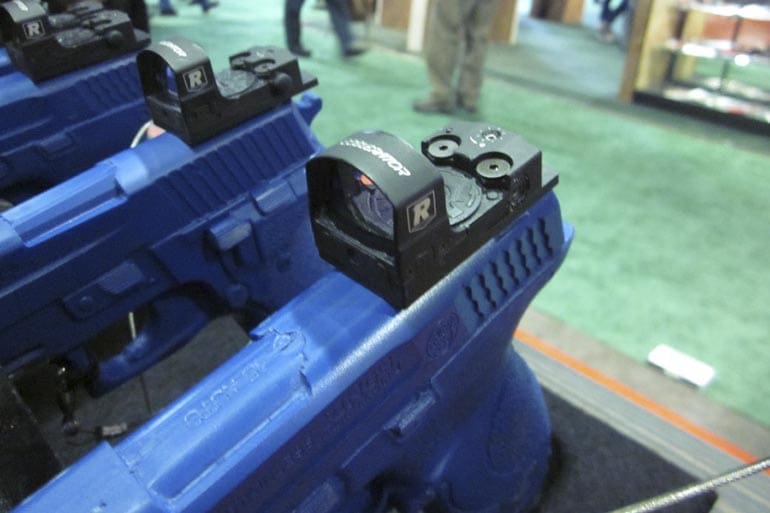



The problem with red dot sights on pistols, and its a big problem, is that you can only see the dot in the screen if you have a good draw and proper presentation from the holster.
If not, the dot is off the screen and there is no indication that its high, low, left or right. The only way to know is to move the sight around until you find the dot, or transition to your pistol sights (which need to be suppressor sights to be seen). This wastes ALOT of time which you may not have in a life threatening position.
While practicing your draw stroke will perfect your presentation, the problem lies when you are in odd positions such as behind cover, shooting around obstacles, from the ground after getting knocked down, etc.
I have tried a red dot on two pistols and went back it regular sights.
PS- Red dot sights are great on rifles even in odd positions because of the numerous points of body contact on the rifle- both hands, shoulder and cheek.
Generally agreed.
I use Eo’s on my Carbines and they are FABULOUS especially with the magnifier for longer shots and older eyes.
For closer engagements, the field of view is wide and deep enough that I can still see the illuminated red dot in holographic space. No need to have the dot or circle centered, just put the dot on the target and pull the bang switch. No so for Red Dot sights on pistols or Carbines.
Sorry to highjack the content on reply 1, but I’m guessing others will want to know as well…
What is the low-end price-point for a reliable red-dot? (for any platform)
I’m not an operator operating operationally, I’m on a fixed income, and I rather have several Chevy’s than one BMW.
I love the Atibal reflex site. And it is at a very good price point. I would check those out.
I swear by the Sig Romeo 5. $150 and it’s held up well to serious abuse under recreational, simulated wargaming scenarios. That seems to be the cheapest “combat grade” red dot on the market, though the Vortex Sparc is also reputed to be quite good and they run for around $200. If you’re just looking for something that’ll work for range use, the Bushnell TRS-25 is a good bet. Under $100 and reasonable quality, though I wouldn’t trust my life to it.
Sparc II is $139.99 at Brownells right now. If you give them your email address they will occasionally send discount codes for $10 off (or more) and free shipping etc.
I just bought one for an AR. Only took one 3 shot group and then a few clicks for a 50 yard zero. So far so good but I haven’t put many shots downrange yet.
I’ll vouch for the Romeo 5 as well. Among the features I wanted were a motion sensed ON/OFF and a 2 MOA dot. While mine’s mounted on a .300 BLK AR, I can sit on my butt at 200 yds and without much effort keep everything in the 200 black center.
When describing the “dot”, it is better compared to a cone than a triangle, since cones are 3 dimensional and triangles 2. 3 dimensional is more correct as the distance changes. Your shots should hit somewhere within the “base” of the cone which will be on the target. The base of a cone would be a circle, the result of connecting the legs of a triange would be a line. I doubt the results of most “groups” will fit on a line.
This is also a more correct concept when shooting anything at any distance beyond, say, 25 yards, with any single projectile firearm.
I’d also point out that all “red dot” sighting systems are not the same. There’s a difference in the overall effects of a “tube” like Aimpoint, and reflex sights such as all of those pictured. Makers, such as EOTech will point that out to you.
I’ve got a Bushnell TRS-25 for my Ruger 10/22 and like it a lot. I’ve seen it for about $67 if memory serves. While all reflex sights have some parallax error, I suspect the TRS-25 has more of it than the more expensive ones. The only reliability issue I’ve experienced is that you gotta remember to turn it off.
It all comes down to training. Build up that muscle memory. With training, red dots on pistols are faster. Especially when needing to make precise hits on smaller targets 15 yards or more in distance.
And you’ll almost never need to make a shot at that distance unless you are in an active shooter situation. For a typical street thug encounter, we are talking 5 yards and in.
“For a typical street thug encounter, we are talking 5 yards and in.”
Yeah, but not everything in life is “typical”. So does that means we shouldn’t ever train to make hits further than 5 yards? With your reasoning we should also all only carry 2 to 3 rounds in our guns because almost all self defense shootings are over in a couple rounds.
Never said any of what you infer, I’m just saying to purchase a red dot solely based on its ability at distance is foolhardy. I can hit an 8 inch plate at 50 yards with my iron sights….
Mark, you are not typical.
A minute of angle is an angular measurement, namely 1/60th of a 360-degree circle.
A minute is one sixtieth of a degree. One sixtieth of a circle is six degrees.
If you can’t get that right, I have serious doubts about the rest of the article.
It jumped at me too. Not mentioning the claim that projectiles fly on parabolic arc. It’s true – in vacuum.
One minute of arc is 1/21,600th of a circle.
One degree of arc is 1/360th of a circle.
On the perimeter of a 7″ circle, one minute of arc = 0.001″, or 1 thousanth of an inch, or 1 MOA. A typical hair is around 0.005″ diameter.
That’s pretty darn small. Anyone who can see 0.001″ at a couple of feet obviously has the best eyesight of any one this side of God.
Just sayin…
Red dots are basically the only good way to use a pistol and NODS. The problem is focus. Most people set the focus on their NODS at infinity which leaves you woefully unprepared for getting a good sight picture with traditional sights. I found this out the hard way at a night shoot where I thought that my tritium sights would be good enough to engage pistol targets while running dark. In reality, not so much. They came out as three vague blurs that you couldn’t really align to any useful degree. Replace the tritium sights with a red dot and traditional target sights, no problem. Bit of an issue if your dot goes down, but that’s what your pistol mounted light is for. (Also, if you get a reputable red dot, your pistol is far more likely to fail than the dot. I personally prefer a dual illumination RMR, but I’m a bit of a mutant.)
“Bit of an issue if your dot goes down, but that’s what your pistol mounted light is for.”
Or laser?
Lasers and NODS don’t play nicely together on pistols. Major height over bore issues or a very divergent zero.
While it will be a few years before I get back into night vision shooting it’s always great to hear from others who are into it. Was the tritium a recital or the 3 dot night sight variety? Also was it more of a visual wash out like one gets when they forget to set the aimpoint to low or just too much “noise” to get a solid alignment? (Never had tritium anything while I had access to night vision)
The tritium RMR reticle works fine. The tritium night sights… no so much. It’s basically like having three glowing teacups floating where your sights should be. A combination of “too bright” and “severely out of focus”
Thanks man probably saved me a hundred there. Still not totally sold on rmr but I grew up on the point and shoot with irons for pistol so most of it is probably learning curve aversion. But if it works half as well as on rifles it would be great on distance shooting.
Problem is the same with any iron sights. Focus. NODS have a fixed focus setting (at least the ones I’m aware of) and that means your irons will always be so out of focus as to be unusable or your NODS will be set on a focus where you can’t see your target. Obviously, the latter isn’t really an option, so you either have to go with a red dot or an IR laser. I don’t recommend the laser as zeroing it is incredibly difficult and it’s far more prone to failures than a quality red dot. I’ve heard good things about the new ACRO, but haven’t had a chance to try it out yet.
Hinie or Novak fixed sights. Thanks. Don’t need a movie screen on my pistol. The more complicated you make it, the more complicated it is. Pistol sights that need batteries. How stupid is that?
You do realize that there are sights out there where the battery will last years? Right? That’s not even counting the non-battery powered versions.
It’s like a dang Geritol commercial in here, lol. It’s shocking there aren’t posters complaining about new-fangled autoloaders & brass cases.
“Newfangled autoloaders….”? Self contained metallic cartridges were in use by ~1860 and autoloading, semiautomatic pistols and rifles were developed in the late 1870’s and early 1880’s. Bolt action autoloaders are even older. By comparison, reflex sights are a MUCH newer invention. That, plus a desire to KISS, probably accounts for much of older shooters’ hesitation. By the time we’re all carrying Han Solo’s blaster, optics on pistols will be SOP.
What the hell is a bolt-action autoloader?
Any of the many rifles with a, usually internal, magazine holding additional rounds. The shooter needs only to work the bolt between shots, not load the chamber. Sorry, I should have used more precise terminology.
burris fast fire iii battery life. I dont know it has been three years on the battery that came with it.
My problem isn’t that I don’t trust the optic company, it’s that I don’t trust the battery makers. QC on batteries is good but not perfect, which isn’t surprising considering the number of units they make.
Adding two points of failure and paying to do it just doesn’t appeal to me. Maybe it will if my eyes start to go when I’m older but I think I’d consider LASIC before I thought about a red dot.
So get yourself a dual illumination dot. I personally love my RMR. No more a point of failure than any other optical sight and less of one than most.
Yes, I know all that. Still, no thanks. I’ll spend more having set of quality sights installed than many do on red dot optics. And yeah, I’ve used them. Didn’t like them. Or lasers.
It doesn’t matter if the battery goes out. Anything in the middle of the sight window will get shot at 25 yards whether there is a red dot there or not.
No thanks…
I carry an LCP. Ruger just wasn’t thinking when they decided to not put rails on it.
I keep reading about 3-3-3.So how are these sights good again?..
Except for comp. shooters, how is this better? And a dead battery?
For crying out loud, LEARN to point shoot your EDC gun!
Oh but that would require learning and developing a skill, It’s much more fashionable to buy a gadget, technology is king
You left out the biggest reason why people like pistol red dots: threat focus.
John at Warrior Poet has a great explanation. Here: https://youtu.be/vtT4dd392wI
My son had a pistol with all the Fancy’s. ,. Snake,!!!! .410 shootgunm bead front sight blasted it before he could get his gizmos on target. However he could hit clay pigeons with it, but that was with gunm in hand and him calling pull. I guess if a guy likes them they do seem to work okay.
I put a Leupold DeltaPoint on my Glock 19. It’s a fun range toy but the jury is still out. I would trust it more to carry if I put raised sights on it to allow for dual acquisition. Once it’s sighted in, it is accurate, at the range anyway…
I’m in a similar situation; Vortex Viper on a Glock 19. Have you tried shooting with a C.A.R. grip and stance? When i shoot close range using CAR, I’m already point shooting, so i don’t feel like I need the red dot. Shooting a lot further away, the dot of the Vortex Viper, is bigger than i’d want. It’s an expensive experiment, but I’m having fun learning.
I’ve heard of the center axis stance (was told that’s how they taught Keanu Reeves to shoot in the John Wick movies) , but I have not explored it. If I can shoot like that, it’s worth the time and money 😃. Thanks for the reminder.
I’m always looking for ways to improve at guns and golf. 👍🏻
If you have astigmatism in your sighting eye you will not see a perfect dot.
Most likely a smear or seeming reflections of the dot color.
Look thru one before you purchase.
I’m just an OFWG so these new fangled toys and gadgets are way outside my EDC, training class or range toy wheelhouse and my budget. For me, expensive but worth it, are any night sights a/o high visibility sights on my pistols. I’ve used XS Big Dot night sights, fiber optics, and gold beads. Most expensive were the Crimson Trace Laserguards/grips on my LCP, LCR and Kahr. I liked the comments about learning to point shoot and developing an accurate, quick flash sight picture. I can’t imagine needing anything more for 99% of self defense. However, toys make the world go ‘round.
I have the CT grip laser for my LCP. I took it off. The little button at the grip point was impossible for my large hand to use. Also the dot washed out at 5 ft. in bright light. I also seem to be able to point shoot with minimal practice, at least to the 3-3-3 standard.
There’s also folding iron sights to get that cowitness, for those who are indecisive (or simply want a normal holster)
I’ve a cheap tru-glo that shuts off from the recoil of my .22 pistol. I need to throw it away since I can’t find the bad connection.
I’ve got a Bushnell on another .22 that is just perfect. Two colors, 4 different rectacle and the batter is easy to get to.
Is there anything to know when buying a sight for an AR pistol? This is a buffer tubeless AR style (think Oly Arms) except in 450 Bushmaster.
I am mystified by red dots on pistols.
Lasers like the Crimson Trace grip lasers are far superior on a pistol.
A red dot has to be at eye level to see the dot.
A laser can be fired from the hip. Or while behind cover and only exposing your hand.
I can even make hits using the laser shooting one handed while running away from the target!
Indoors I can easily hit targets at the far wall at the range at 75 feet.
My Crimson Trace lasers are visible out to 30 feet in bright Florida sun and much further on cloudy days.
How far do you plan to shoot with a defensive gun use?
If the battery dies on the laser, then you are back to iron sights or point shooting
I have an RMR red dot on one revolver and CT laser grips on another and I agree with you on their relative utility. I may end up retiring my red dot since I’m highly unlikely to try to hit anything far away, where the laser may be impossible to see.
Any recommendations on fogging? Is this a real issue or a fantasy issue for tactical nerds who operate operationally in refrigerators next to swamps? Or in humid parking lots in front of chilled super stores in Florida?
Can only speak to the aimpoint I used in training while in Missouri (only 90% humidity but may apply) if the lenses is foggy keep both eyes open an focus on the target while keeping sight picture of dot on target. No where near as precise as normal but I was good to 200ish meters lead on target. I think the method is called Binder or something like that.
I’ve never had a fogging issue, but then I live in Arizona. Anyway try the above suggestion of keeping both eyes open, but if possible close/cover the muzzle end of the red dot for better contrast. This is a useful technique if your red dot is not bright enough in the middle of the day too (in the AZ desert).
You didn’t include the multi-year report concluding the RMR is THE red dot to use if your life is on the line.
https://docs.wixstatic.com/ugd/7dc128_0ce3f826e1264cff964d64079552b640.pdf
Also the Holoson 507 is upto 6K rounds plus it has a circle reticle and shake awake and half the price.
The circle has to be faster to acquire.
You didn’t mention one “dirty secret” of red dots mounted on pistol slides: the ejected casings can strike the red dot. I know someone with a SIG Romeo 1 mounted on their GLOCK that had several casings strike it until it finally cracked the lens. SIG’s only reply was to replace it and say “yeah, that happens”. Further research on the interwebs reveals lots of others having similar issues with many different combinations of pistol and red dot. The only solution appears to be to try and change the timing by trying different bullet weights or recoil springs. Not something I want to play around with on my carry gun.
I looking for pistol iron sights that work with pistol red dots. This seems to not be a topic. Irons sights and red dots on rifles do not seem to be a problem.
No one addresses a red dots lens clarity in low light . Say your walking to a parking garage , Its not dark enough to need a light . Most stock open sights would be ok but you see a man step out with a knife so you draw your pistol and can not see him thru the lens of your red dot . No one covers this short coming with red dots .
I removed a RMO2 pff my m&p core after noting how tinted the lens is and that reduces clarity when in my room down stairs . Its a 14×28″ room with just a pool table light on windos covered and I find I am better off with open sights like the thin gold bead on my commander or a green ring ns on my wifes p365xl or the not so great s&w 669 sights But I can see a target and flash over the sights to sshoot as needed !! You do some of the more informative videos out there so maybe your can cover this issue . I had a P320xc with optic I got used cheap . It had the first series of sig romeo 1 . I sold that pistol do to chamber and bulged brass after sig said it was in spec !! I kept the red dot for testing and with all the faults of the early sig dot its clariy in the house is good and shake a wake has been fine for a year but only have a few hundred rounds thru it on my m&p core . Any how just a thought .
Чек-лифтинг в Москве – цена подтяжки средней зоны лица в клинике доктора Сойфера[url=https://soyfer.ru/chek-lifting/Чек лифтинг[/url]Вы можете заказать услугу организации корпоративного питания сотрудников предприятия, работников или персонала фирмы в Москве и Московской области.Эндоскопическая подтяжка средней зоны лица в Москве по разумной цене. Стоимость чек лифтинга и запись на консультацию онлайн на сайте клиники доктора Сойфера. ? 8-495-235-5550
Имплантация зубов All-on-4 – популярная услуга в клинике доктора Сойфера. Качественное протезирование (Все-на-четырех) – гарантия лучшей цены под ключ! Реальные отзывы клиентов